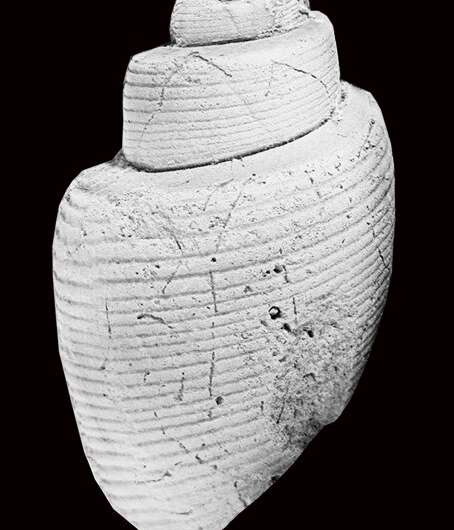The Heterobrachia was little affected by the end-Triassic mass extinction, possibly because of a flexible mode of feeding of the larvae, an adaptation to relatively warm temperatures, and a flexible attachment of the mantle that allowed for covering the shell. Credit: Mariel Ferrari, CC-BY 4.0 (creativecommons.org/licenses/by/4.0/)
A pair of researchers, one with Instituto Patagónico de Geología y Paleontología, the other with the University of Zurich, has found three possible factors that might explain why some types of snails were able to survive the end-Triassic mass extinction event. In their paper published on the open access site PLOS ONE, Mariel Ferrari and Michael Hautmann analyzed extinction patterns of snails from the period.
The end-Triassic mass extinction event, as its name implies, was a period of change on Earth approximately 201 million years ago that led to a mass die-off of many of the creatures living at that time. Prior research has suggested that the event paved the way for the dominance of the dinosaurs. Prior research has also shown that another genera did particularly well as so many others were dying off—a subclass called Heterobranchia, a type of sea snail. Approximately 56% of all gastropod genera were wiped out during the massive extinction event, but only 11% of Heterobranchia were killed off.
It has also been found that after the extinction event, Heterobranchia flourished and begat new genera. But how or why this one type of sea snail did so much better than so many others has remained a mystery. In this new effort, the researchers sought to find the answer.
The work involved studying multiple characteristics of different types of snails from the time, including larval development, shell size and general anatomy. They found several factors that could have favored the snails. The first was putative feeding during the larval stage. Heterobranchia typically fed on plankton. But as conditions changed, plankton became more difficult to find. And unlike other creatures, Heterobranchia had the ability to eat other nonliving material to sustain itself.
A second factor was the ability of Heterobranchia to adapt to living in warmer water. The third factor involved their flexible mantles. The researchers suggest their makeup may have helped protect the snails from increased acidification of ocean water.
More information: Mariel Ferrari et al, Gastropods underwent a major taxonomic turnover during the end-Triassic marine mass extinction event, PLOS ONE (2022). DOI: 10.1371/journal.pone.0276329
Journal information: PLoS ONE
© 2022 Science X Network
























